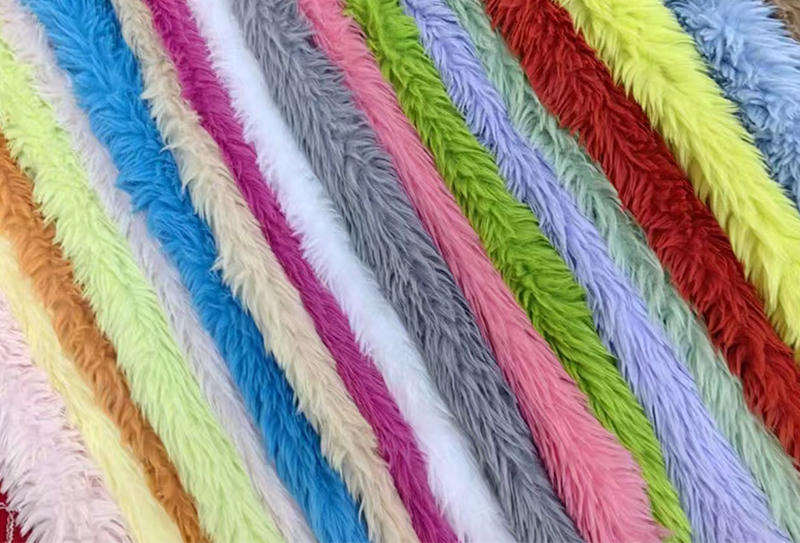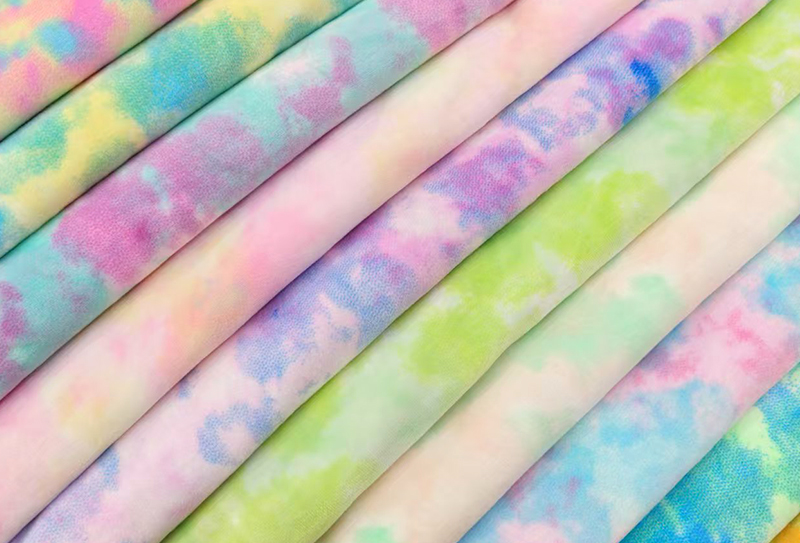510g/170cm spandex ultra-soft short plush fabric adopts 95% polyester + 5% spandex blending process. The 300g/m weight and elastic fiber give the fabric excellent close-fitting comfort. The 170cm ultr...
See DetailsSustainable Alternatives: Why Soft Faux Fur Fabric is the Future of Ethical Fashion
The Rise of Conscious Consumerism in Fashion
The fashion industry is undergoing a profound transformation as consumers increasingly prioritize ethical considerations in their purchasing decisions. This shift toward conscious consumerism has created an unprecedented demand for sustainable alternatives that don't compromise on style, quality, or sensory experience. At the forefront of this movement stands soft faux fur fabric, a material that has evolved from being merely a substitute to becoming a premium choice in its own right. The development of sophisticated manufacturing techniques has enabled producers to create faux fur that not only mimics the luxurious texture of animal fur but often surpasses it in terms of consistency, durability, and ethical credentials. This evolution represents a significant milestone in the journey toward a more compassionate and environmentally responsible fashion industry, where technological innovation aligns with moral imperatives to create beautiful, functional textiles that consumers can feel good about wearing.
Understanding Modern Faux Fur Technology
Contemporary faux fur manufacturing has progressed dramatically from the stiff, obviously synthetic fabrics of past decades. Today's advanced production methods utilize sophisticated textile engineering to create plush, realistic alternatives that appeal to both ethical consumers and fashion traditionalists. The transformation begins at the molecular level, where polymer science has enabled the creation of finer, softer fibers that drape and move with remarkable similarity to natural fur. These technological advancements have resulted in materials that offer visual and tactile characteristics once exclusive to animal-derived fur, while simultaneously addressing the ethical and environmental concerns associated with traditional fur production. The result is a new generation of textiles that satisfy the human desire for luxury and comfort without the moral compromises that have increasingly become unacceptable to modern consumers.
Key Manufacturing Breakthroughs
Several technological innovations have been instrumental in elevating faux fur from an imitation to a premium textile category. These developments span the entire production process, from raw material selection to finishing techniques, and collectively contribute to the superior quality of modern faux fur fabrics.
Fiber Development and Texture Engineering
The foundation of high-quality faux fur lies in the advanced fibers specifically engineered to replicate the complex structure of animal fur. Manufacturers have developed multi-component filament constructions that mimic the natural variations in diameter, texture, and resilience found in different types of animal fur. This attention to microscopic detail results in fabrics that not only look authentic but feature the same luxurious hand-feel that has made fur so desirable throughout history. The development of specialized knitting and tufting techniques has further enhanced the realism of faux fur, creating dimensional pile heights and directional nap that responds to touch in a manner indistinguishable from its animal-derived counterpart.
Environmental Impact Assessment
When evaluating the ecological footprint of textiles, it's essential to consider the complete lifecycle from production through disposal. Modern faux fur presents a compelling case when examined through this comprehensive lens, particularly in comparison to traditional animal fur.
Resource Consumption and Carbon Footprint
The production of soft faux fur fabric involves significantly different resource inputs compared to animal agriculture for fur. While both processes require energy, water, and raw materials, the distribution and intensity of these demands vary considerably. Faux fur production typically utilizes petroleum-based polymers as primary inputs, which raises concerns about fossil fuel dependence. However, advancements in recycling technologies and the growing use of recycled materials are substantially mitigating these concerns. Additionally, when compared to the land use, feed production, waste management, and methane emissions associated with fur farming, the carbon footprint of faux fur production is generally lower, especially as manufacturing facilities increasingly transition to renewable energy sources.
Comparing Environmental and Ethical Implications
The debate between traditional fur and faux fur extends beyond simple material properties to encompass broader ethical and environmental considerations. A thorough comparison reveals significant advantages for modern faux fur across multiple dimensions of sustainability and animal welfare.
When examining the key differences between these materials, several distinct advantages for faux fur become apparent. The following comparison highlights these critical distinctions:
| Criteria | Traditional Animal Fur | Modern Faux Fur |
|---|---|---|
| Animal Welfare Impact | Directly involves animal confinement and killing; raises significant ethical concerns about suffering and humane treatment. | No animal suffering involved in production; aligns with ethical fashion principles and cruelty-free standards. |
| Resource Intensity | Requires extensive land, water, and feed for animal rearing; high greenhouse gas emissions from farming operations. | Manufacturing primarily uses industrial processes; increasingly incorporates recycled materials and renewable energy. |
| Chemical Usage | Heavy use of tanning chemicals, preservatives, and dyes; potential for environmental contamination from farm runoff. | Controlled chemical application in manufacturing; developing water-free dyeing and eco-friendly treatment options. |
| Biodegradability | Natural fibers will eventually decompose but treatment chemicals may persist in the environment. | Traditional versions are not biodegradable, but new plant-based and biodegradable synthetic options are emerging. |
| Longevity and Care | Requires specialized cleaning and storage; can be damaged by pests and moisture without proper care. | Generally more durable and easier to maintain; resistant to moths and moisture damage; often machine washable. |
Exploring the Versatility of Faux Fur in Fashion Applications
The adaptability of soft faux fur fabric extends far beyond simple coat linings or accessory trim. Designers are increasingly embracing this material as a central element in diverse fashion categories, leveraging its aesthetic flexibility and technical properties to create innovative garments and accessories. The development of different pile heights, texture variations, and dyeing capabilities has enabled faux fur to transcend seasonal limitations and establish itself as a year-round textile option. From lightweight summer evening wraps to substantial winter coats, the material's evolving characteristics continue to surprise even seasoned fashion professionals with its expanding range of applications. This versatility represents a significant advantage over traditional fur, which often carries both practical and stylistic limitations that restrict its use across different garment types and fashion contexts.
Innovative Uses Beyond Outerwear
While faux fur has traditionally been associated with coats and jackets, contemporary designers are exploring applications that demonstrate the material's surprising adaptability. These innovative uses highlight how technological improvements have transformed faux fur into a multifaceted textile suitable for diverse creative expressions.
- Evening wear and formal accessories that utilize sheared faux fur for a refined, velvet-like texture
- Home furnishings including luxurious throws, pillow covers, and upholstery accents
- Footwear details and linings that provide both aesthetic appeal and functional warmth
- Handbag exteriors and accessories that offer tactile interest and visual texture
- Unexpected warm-weather applications using breathable, lightweight constructions
Durability and Care Considerations for Long-Lasting Wear
Understanding the maintenance requirements of any textile is essential for maximizing its lifespan and appearance retention. High-quality faux fur coat material offers distinct advantages in terms of durability and ease of care when compared to traditional fur, though specific maintenance practices are necessary to preserve its luxurious texture and visual appeal over time. Modern manufacturing techniques have significantly improved the resilience of faux fur fibers, creating materials that resist matting, shedding, and color fading more effectively than earlier generations of synthetic alternatives. These advancements mean that well-constructed faux fur garments can maintain their aesthetic qualities through years of regular wear with appropriate care, ultimately providing excellent value while aligning with sustainable fashion principles through extended product lifespans.
Proper Cleaning and Storage Techniques
Maintaining the plush texture and vibrant color of faux fur requires attention to specific cleaning and storage methods. Unlike traditional fur, which demands specialized professional care, most faux fur garments can be maintained using simpler at-home techniques, though always following manufacturer instructions for optimal results.
- Regular gentle brushing with specialized pet grooming tools or wide-tooth combs to prevent matting and maintain pile loft
- Spot cleaning with mild detergent solutions for small stains, followed by thorough rinsing and air drying
- Machine washing on gentle cycles with cold water when necessary, using mesh bags for protection
- Air drying away from direct heat sources, followed by reactivation of the nap through gentle shaking and brushing
- Proper storage in breathable garment bags with adequate space to prevent compression of the pile
Addressing Common Concerns About Faux Fur Materials
Despite significant advancements, some consumers remain hesitant about embracing faux fur due to persistent misconceptions about its quality, environmental impact, and performance characteristics. Addressing these concerns directly provides important context for making informed purchasing decisions. One common misunderstanding involves the perception that all synthetic materials automatically have greater environmental consequences than natural alternatives. While early faux fur production deserved criticism for its environmental footprint, contemporary manufacturing has made substantial progress in reducing energy consumption, implementing water recycling systems, and incorporating recycled materials. Similarly, outdated assumptions about faux fur being stiff, obviously artificial, or prone to pilling no longer reflect the reality of advanced textiles that successfully replicate the luxurious hand-feel and visual richness of high-quality natural fur.
Microfiber Shedding and Environmental Solutions
One legitimate concern regarding synthetic textiles involves microfiber shedding during cleaning, which can contribute to microplastic pollution in waterways. This issue affects all synthetic fabrics, including faux fur, and represents an important area for ongoing innovation and consumer awareness.
Mitigation Strategies and Industry Responses
The textile industry has developed several approaches to address microfiber shedding, recognizing it as a significant environmental challenge. These solutions operate at multiple levels, from manufacturing innovations to consumer care practices, collectively reducing the ecological impact of synthetic textiles.
- Development of specialized filters for washing machines that capture microfibers before they enter wastewater systems
- Creation of longer-staple fiber constructions and enhanced finishing treatments that reduce shedding
- Implementation of guppy-friendly washing bags that contain microfibers during the laundering process
- Research into biodegradable synthetic fibers that maintain performance characteristics while breaking down more readily
- Industry initiatives focused on recycling programs that extend material lifespan and reduce overall production
The Future of Ethical Fashion and Material Innovation
As consumer awareness continues to evolve and technological capabilities expand, the position of luxurious fake fur textile within the fashion landscape appears increasingly secure and promising. The ongoing convergence of ethical considerations, environmental responsibility, and aesthetic excellence suggests a future where materials like advanced faux fur become the standard rather than the alternative. Research and development efforts are focusing on next-generation solutions that address current limitations while enhancing the desirable characteristics that have made faux fur so popular. These include bio-based polymers derived from renewable resources, closed-loop manufacturing systems that eliminate waste, and smart textile integrations that add functionality beyond mere appearance. This trajectory of continuous improvement positions faux fur as a dynamic category within sustainable fashion, capable of adapting to emerging consumer expectations and environmental imperatives.
Emerging Trends in Sustainable Material Development
The field of ethical textiles is experiencing rapid innovation, with researchers and manufacturers exploring novel approaches to creating materials that satisfy both ethical standards and consumer expectations for quality and aesthetics. These developments signal an exciting future for compassionate fashion.
Plant-Based and Bio-Fabricated Alternatives
Beyond traditional synthetic materials, several promising avenues of research are exploring how natural and bio-fabricated substances can replicate the luxurious characteristics of fur without animal involvement. These approaches represent the cutting edge of sustainable material science.
- Development of fur-like textiles using modified plant fibers from sources such as bamboo, hemp, and specialized mushrooms
- Bio-fabrication techniques that grow fur-like materials in laboratory settings using cellular agriculture principles
- Advanced recycling systems that transform post-consumer plastic waste into high-quality faux fur fibers
- Nanotechnology applications that create self-cleaning and stain-resistant properties without chemical treatments
- 3D printing approaches that build fur-like structures layer by layer, minimizing material waste during production
Making Informed Choices as a Conscious Consumer
Navigating the complex landscape of ethical fashion requires careful consideration of multiple factors, from material composition to production transparency. For consumers seeking eco-friendly plush fabric options, understanding how to evaluate different products represents an essential skill in aligning purchasing decisions with personal values. The most responsible approach involves looking beyond surface claims to examine the complete lifecycle of a textile, including the resources consumed during manufacturing, the working conditions of those involved in production, the durability and care requirements of the finished product, and its ultimate disposal pathway. This comprehensive perspective enables consumers to distinguish between genuinely sustainable options and those that merely employ ethical marketing without substantive commitments to responsible practices. As faux fur continues to evolve, informed consumers play a crucial role in driving further innovation by supporting manufacturers who prioritize both environmental stewardship and social responsibility.
Key Considerations When Selecting Faux Fur Products
Evaluating the quality and ethical credentials of faux fur items involves assessing several distinct characteristics that collectively determine both the consumer experience and environmental impact. Attention to these details ensures that purchasing decisions support continued innovation in sustainable textiles.
- Examine fiber composition and seek out materials incorporating recycled content or emerging bio-based alternatives
- Research manufacturer transparency regarding production facilities, labor practices, and environmental certifications
- Assess construction quality including backing material, stitching, and pile density that indicate durability
- Consider versatility and timeless styling that supports extended wear across multiple seasons and occasions
- Evaluate care requirements and identify products compatible with low-impact cleaning methods
Technical Advances in Faux Fur Production Methods
The remarkable transformation of faux fur from a convincing imitation to a premium textile in its own right stems from significant technical innovations across the manufacturing process. These advances have enabled producers to create vegan fur material for clothing that satisfies even the most discerning consumers while addressing environmental concerns associated with earlier synthetic textiles. Modern production incorporates computerized knitting and tufting technologies that allow for unprecedented precision in pile height, density, and texture variation. Sophisticated dyeing techniques create rich, nuanced colorations that rival the natural variations found in animal fur. Additionally, specialized finishing processes enhance the hand-feel and drape characteristics of the material, resulting in fabrics that not only look authentic but move and feel luxurious against the skin. These collective improvements have fundamentally repositioned faux fur within the fashion ecosystem, establishing it as a legitimate luxury material rather than merely an ethical compromise.
Manufacturing Process Refinements
The production of high-quality faux fur involves multiple stages of refinement, each contributing to the final material's aesthetic and functional characteristics. Understanding these processes provides insight into how modern faux fur achieves its remarkable similarity to natural fur while offering distinct practical advantages.
Fiber Extrusion and Modification
The foundation of premium faux fur lies in specialized synthetic fibers engineered specifically to replicate the complex structure of animal hair. Modern extrusion technologies enable precise control over fiber diameter, cross-section, and surface texture, creating filaments that mimic the microscopic characteristics of different fur types.
- Bicomponent fibers that combine different polymer types to create variable texture and crimp patterns
- Modified cross-sections that replicate the scales and medullary structure of natural animal hair
- Surface etching and chemical treatments that reduce synthetic shine and enhance natural matte appearance
- Blended fiber compositions that create the color variations and texture complexity found in natural pelts
- Electrostatic finishing processes that separate individual filaments and prevent clumping
The Psychological and Social Dimensions of Faux Fur Adoption
Beyond technical specifications and environmental metrics, the growing acceptance of warm cruelty-free fabric reflects broader shifts in social values and individual psychology regarding fashion consumption. The decision to choose faux fur over animal-derived alternatives often involves complex considerations that extend beyond simple material preferences to encompass personal identity, ethical worldview, and social signaling. For many consumers, selecting faux fur represents an alignment between aesthetic desires and moral convictions, creating a sense of integrity and consistency in their consumption patterns. This psychological satisfaction contributes significantly to the material's growing popularity, particularly among younger demographics who increasingly view ethical considerations as integral to their purchasing decisions rather than secondary concerns. As faux fur continues to shed any lingering stigma as an inferior substitute, it has become a positive fashion statement in its own right—one that communicates style consciousness alongside ethical awareness.
Changing Perceptions and Status Signaling
The symbolic meaning attached to fur has undergone a dramatic transformation in recent decades, reflecting evolving social attitudes toward animal welfare, environmental responsibility, and conspicuous consumption. This cultural shift has created space for faux fur to develop its own distinct identity and status associations.
From Compromise to Conscious Choice
Where faux fur was once primarily viewed as an ethical compromise for those who couldn't afford or morally justify genuine fur, it has increasingly become a positive statement of values and aesthetic preference. This repositioning reflects broader changes in how consumers define luxury and status in fashion.
- Growing social prestige associated with ethical consumption and environmental awareness
- Shift in luxury definitions from exclusive materials to exclusive design and craftsmanship
- Increased visibility of faux fur in high-fashion contexts and celebrity endorsements
- Development of distinctive faux fur aesthetics that diverge from merely imitating natural patterns
- Integration of faux fur into sustainable fashion narratives as a positive environmental choice
-
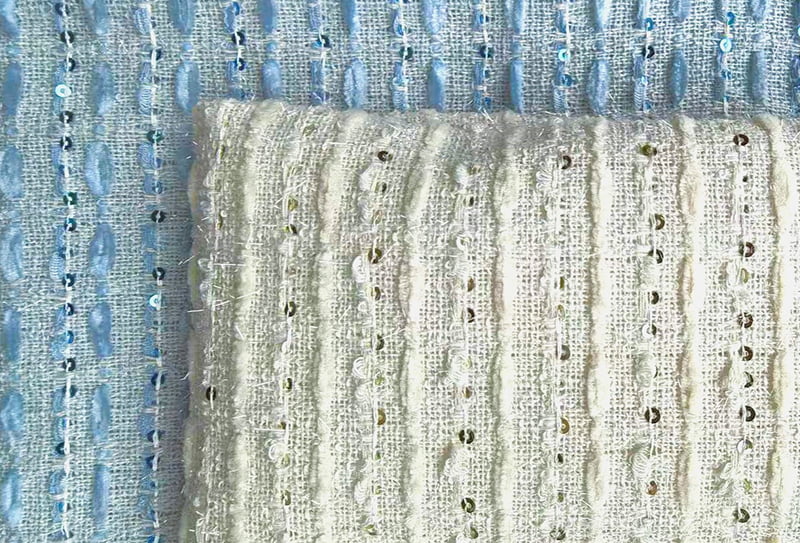
The 425g/148cm wrinkle-resistant and wear-resistant tweed fabric/Chanel-style woven fabric (item number 897331) adopts a composite weaving process of high-count blended yarn and precision sequins. The...
See Details -
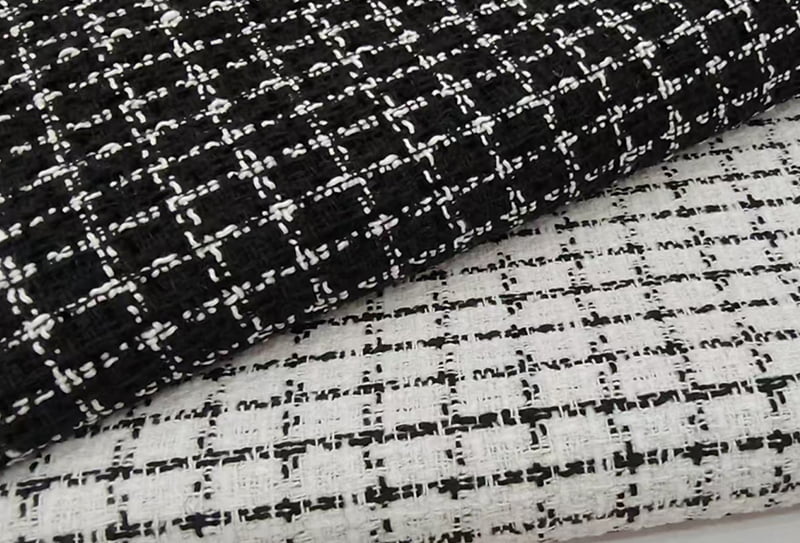
This 500g/148cm tweed fabric/Chanel-inspired # pattern fabric utilizes a high-density jacquard process. Its 500g/m² weight imparts exceptional stiffness and abrasion resistance, while its 148cm width ...
See Details -
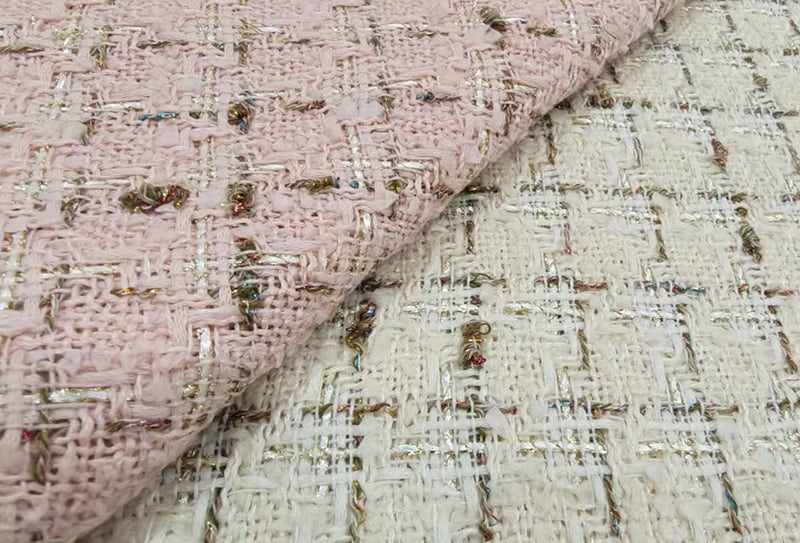
The 500g/148cm tweed fabric/Chanel-inspired fabric (Item No. LS834322) is precision-woven from high-count blended yarns. Its medium-heavy weight of 500g/m imparts excellent stiffness and warmth. Its 1...
See Details -
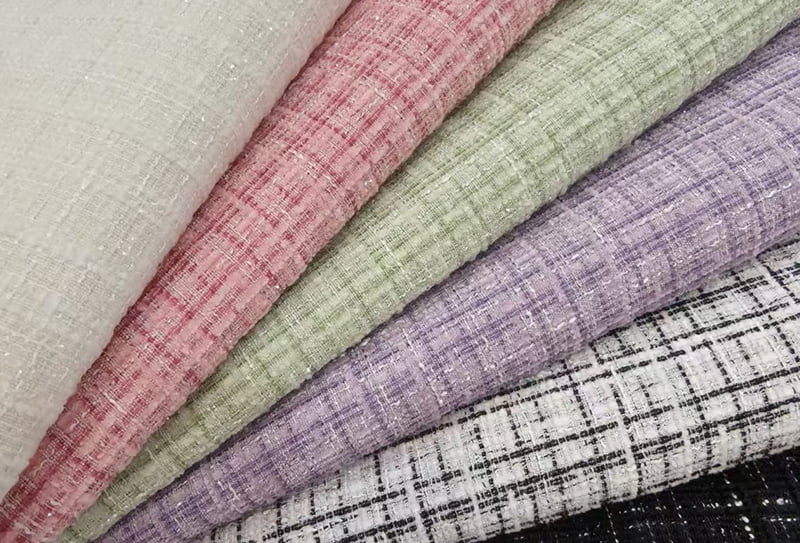
The 500g/148cm tweed fabric/Chanel-inspired fabric (item number LS780314) utilizes a high-density weave. Its 500g/m² weight imparts exceptional stiffness and drape, while its 148cm width maximizes uti...
See Details -

This 450g/148cm tweed fabric (item number LS540412) utilizes a high-density weave. Its 450g/m² weight imparts just the right amount of stiffness and flexibility, while its 148cm width is optimized for...
See Details

 English
English 中文简体
中文简体